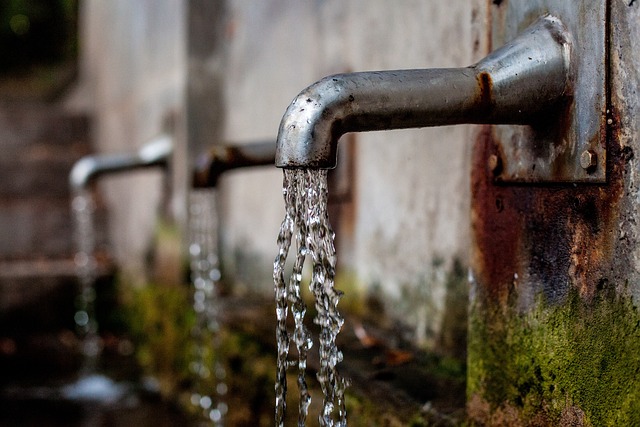3 Key Takeaways:
1. Danish Model for Nitrate Reduction: Denmark's comprehensive approach to reducing nitrate levels in drinking water, incorporating stricter standards, innovative technologies, and groundwater protection, serves as a powerful model for other nations aiming to balance health benefits with economic gains.
2. Global Water Management Inspiration: Denmark's success offers inspiration for countries worldwide facing rising nitrate levels. By embracing holistic strategies and advancements in water purification, nations can address health risks and realize substantial economic savings, reshaping global water management practices.
3. Priority on Water Quality: Denmark's journey emphasizes the rewards of prioritizing water quality. The nation's success underscores the importance of forward-thinking policies to ensure clean and safe drinking water, providing valuable lessons for nations navigating their own water challenges.

Linking Health and Economic Growth
As Denmark contemplates the dynamic nexus between nitrate and its drinking water, the stage is set for a transformative journey towards a healthier and wealthier nation.
Navigating the global challenge of nitrate-contaminated drinking water, intricately tied to health maladies such as birth defects and cancer, has become a priority. Scientific revelations have spotlighted the ominous connection between nitrate exposure and colorectal cancer, a formidable adversary ranking third worldwide in cancer frequency and second in cancer-related fatalities, according to the World Health Organization (WHO).
In the backdrop of an era marked by escalating nitrogen application and economic expansion, studies ominously predict a global surge in nitrate levels in drinking water. However, Denmark stands at the forefront, meticulously adhering to the EU's cap of 50 milligrams of nitrate per liter of water. While much of the nation comfortably complies with this standard, certain pockets of Denmark find themselves facing a unique challenge. Inhabitants in these areas, unbeknownst to them, consume water laced with significant nitrate levels, significantly elevating their risk of colorectal cancer. A groundbreaking study, orchestrated by the University of Copenhagen, Aarhus University, and the Geological Survey of Denmark and Greenland (GEUS), asserts that Denmark could embark on an annual saving spree exceeding $300 million, simultaneously sidestepping 127 cases of colorectal cancer, all by orchestrating a nitrate concentration nosedive in drinking water.
Brian H. Jacobsen, the virtuoso behind the study, challenges the status quo, urging a reevaluation of the EU's modest 50 mg/L baseline. His team's findings champion this move, not just for public health but as a financial boon for the nation.
Published in the esteemed journal Science of the Total Environment, the study unravels a Danish idiosyncrasy – about 20% of the populace is unwittingly toasting with water that breaches the 4 mg/L nitrate mark, while 10% are pushing the envelope with levels exceeding 9 mg/L. While personal habits like diet, exercise, and smoking remain pivotal in the colorectal cancer saga, society could certainly cash in on cleaner water.
The research, anchored in a 2018 population study, crunched the numbers, revealing that the benefits of reducing nitrate concentrations in Danish drinking water dwarfed the associated costs. The potential economic windfall vastly outstripped the expenses, regardless of the chosen reduction strategy – be it safeguarding groundwater, uprooting boreholes, or employing cutting-edge water treatment technologies.
For instance, dialing down the nitrate standard to 9 mg/L could dramatically cut colorectal cancer cases by 72, unleashing an annual financial windfall of $179 million. Pushing the envelope further to a nitrate cap of around 4 mg/L could spare an additional 55 cases, amassing an extra $138 million in savings.
The researchers weighed three cost-efficient strategies: safeguarding groundwater, relocating boreholes, and deploying water treatment technologies. Each method, with its unique set of pros and cons, beckons decision-makers to tailor their approach based on local dynamics and timeframes. Even when considering the highest costs and adopting a pessimistic outlook on health improvements, the economic case for reducing nitrate levels stands strong.
In a parting note, the study hints at a cascade of potential benefits beyond preventing colorectal cancer. Advanced water purification methods may usher in a broader health revolution, wiping out not only nitrate but a host of other lurking contaminants. As a welcome side effect, curbing nitrate emissions from agriculture promises to shield aquatic ecosystems and the environment from the harmful effects of nitrogen. These, the researchers argue, are conservative estimates, hinting at a transformative journey for Denmark's water landscape.
Denmark's proactive approach to reducing nitrate levels in drinking water, yielding both health benefits and substantial economic savings, offers a blueprint for other countries facing similar challenges.
Embracing stricter standards, investing in innovative water treatment technologies, and safeguarding groundwater could prove instrumental in mitigating health risks and achieving a healthier, wealthier future globally. Denmark's success serves as an inspiring example for nations to rethink and optimize their water management strategies in the pursuit of clean and safe drinking water for all.
